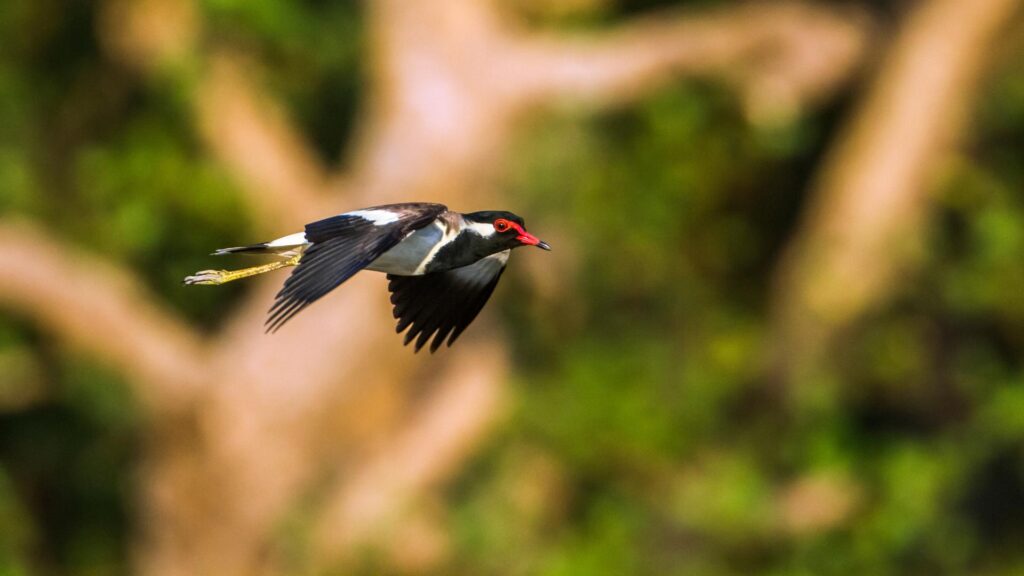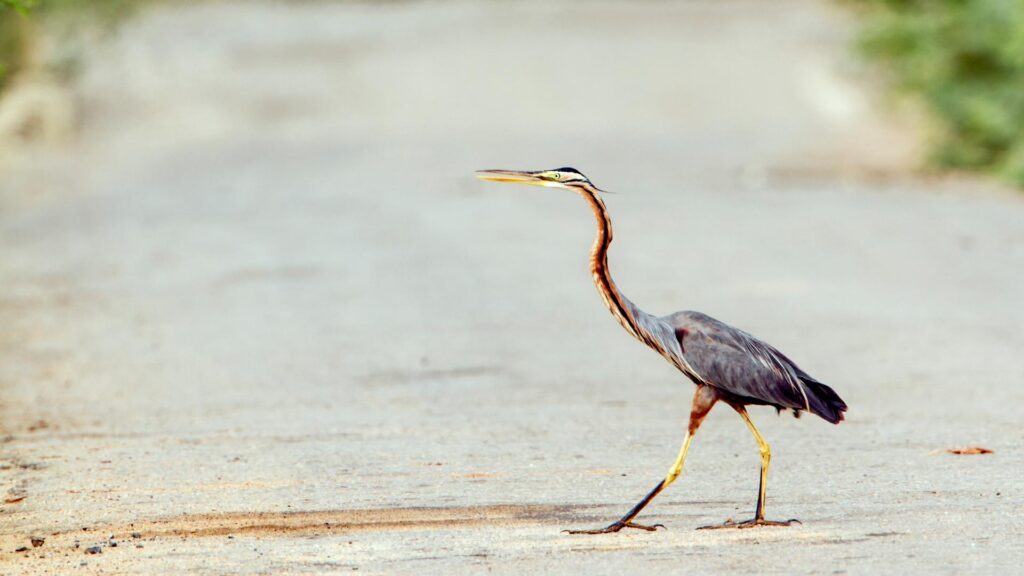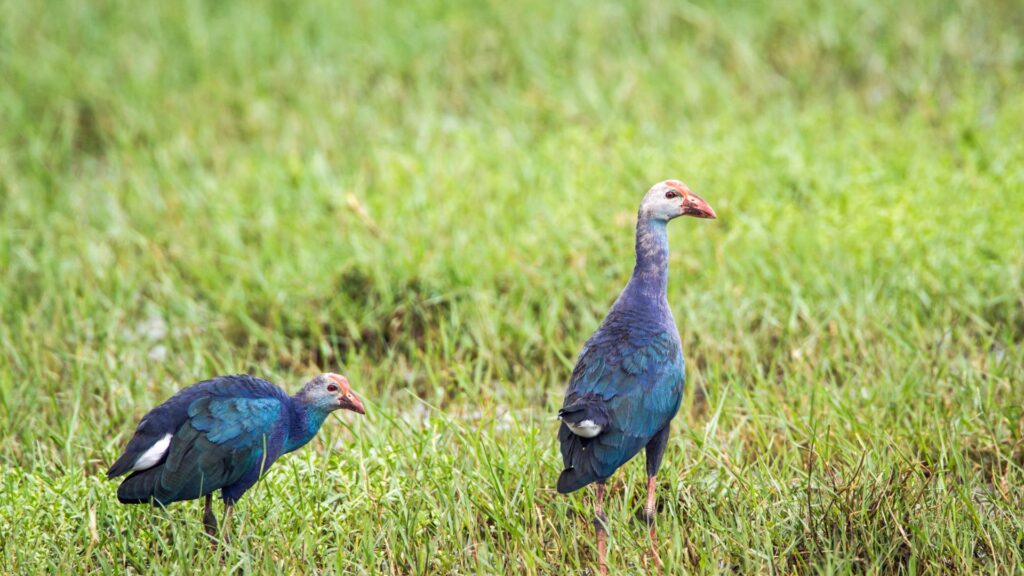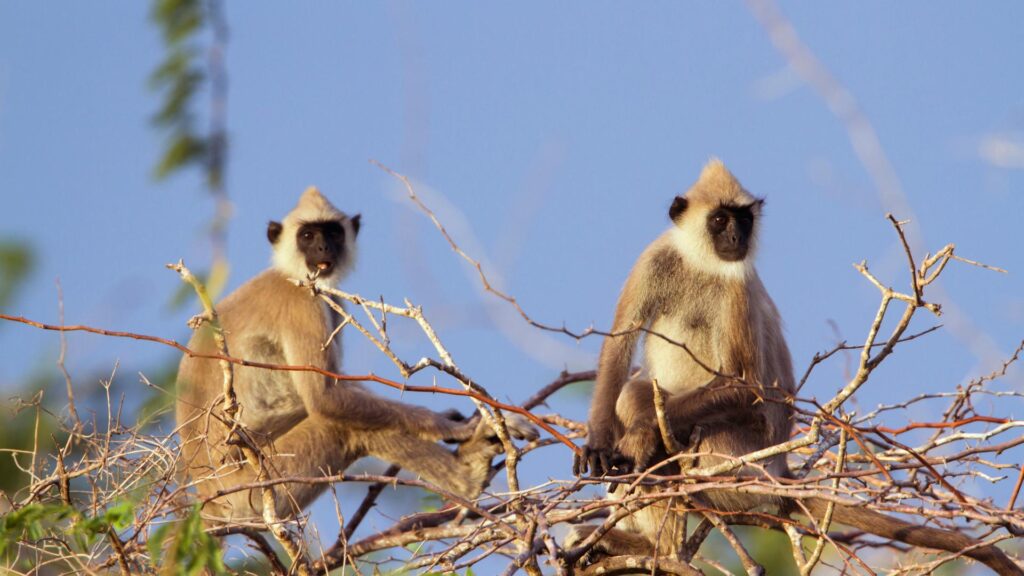Exploring the Untamed: A Journey Through Bundala National Park
Welcome to Bundala National Park, a pristine wilderness nestled in Sri Lanka’s southeastern coast. This enchanting sanctuary boasts a rich biodiversity and a tapestry of landscapes that make it a must-visit destination for nature enthusiasts from around the globe.
Bundala National Park, established in 1969, spans over 6,200 hectares and is renowned for its diverse ecosystems, including wetlands, lagoons, scrublands, and coastal dunes. It was designated as a UNESCO Biosphere Reserve in recognition of its significance as a crucial habitat for numerous plant and animal species and also a RAMSAR site.
Brief History and Significance as a Conservation Hotspot
The history of Bundala National Park dates back to ancient times when it served as a hunting ground for Sri Lankan royalty. However, in the modern era, its conservation value became apparent, leading to its establishment as a protected area. Today, it plays a vital role in the conservation of endangered species, migratory species and the preservation of fragile ecosystems.
What Makes Bundala a Must-Visit Destination for Nature Enthusiasts

Bundala is a paradise for wildlife enthusiasts, offering unparalleled opportunities to observe a diverse range of fauna and flora in their natural habitat. The park is especially renowned for its birdlife, with over 200 avian species, including migratory birds such as waders, painted storks, and spoonbills, making it a bird watcher’s paradise.
Apart from birds, Bundala is also home to iconic wildlife such as Asian elephants, crocodiles, Rusty-spotted cats, and various species of deer and monkeys. The park’s varied landscapes, from tranquil lagoons to dense forests, provide the perfect setting for wildlife sightings and immersive nature experiences.
In addition to its natural beauty, Bundala National Park offers visitors the opportunity to engage in eco-friendly activities such as guided safaris, nature walks, and birdwatching tours. These experiences not only showcase the park’s biodiversity but also promote environmental awareness and conservation ethics among tourists.

Ecological Importance of Bundala’s Flora and Conservation Efforts
The flora of Bundala National Park plays a vital role in supporting its rich wildlife populations. Mangrove forests, grasslands, and scrub jungles provide food, shelter, and breeding grounds for a myriad of species, contributing to the park’s ecological balance.
Conservation efforts within Bundala focus on preserving these fragile ecosystems while promoting sustainable tourism practices. Currently, Bundala National Park is facing threats from the spread of invasive plant species and park management taking many actions to defend that. By raising awareness about the importance of biodiversity conservation, Bundala aims to safeguard its natural heritage for future generations to enjoy.


Navigating the Journey: How to Reach Bundala National Park
Accessible Routes from Major Cities
Bundala National Park is strategically located, making it accessible from several major cities in Sri Lanka. If you’re starting your journey from Colombo, the capital, you can embark on a scenic drive along the southern coastline.
The route takes you through charming towns and picturesque landscapes, offering a glimpse of local life along the way. Alternatively, if you’re coming from Galle or Matara, the park is just a few hours’ drive away, making it an ideal day trip or weekend getaway.
Transportation Options Ranging from Adventurous Drives to Guided Tours
When it comes to transportation, visitors to Bundala National Park are spoiled for choice. For those seeking adventure, self-driving is a popular option. The well-maintained roads and clear signage make navigation relatively easy, allowing you to set your own pace and explore hidden gems along the route.
If you prefer a guided experience, We can offer Bundala National Park as part of their wildlife and nature tours. These guided tours not only ensure a hassle-free journey but also provide valuable insights from knowledgeable guides who can spot elusive wildlife and share fascinating facts about the park’s ecosystem.
Insider Tips for a Seamless and Enjoyable Journey to the Park
To make the most of your visit to Bundala National Park, consider these insider tips:
- Timing Is Key: Plan your visit during the dry season (May to September) for optimal wildlife sightings, as animals congregate around water sources during this time.
- Bring Binoculars and Cameras: The park is a birdwatcher’s paradise, so don’t forget your binoculars and camera to capture stunning avian species in their natural habitat.
- Dress Appropriately: Wear light, breathable clothing and sturdy walking shoes or boots for comfort during nature walks and safaris.
- Respect Wildlife: Maintain a safe distance from animals and follow park regulations to ensure the safety of both visitors and wildlife.
- Stay Hydrated and Pack Snacks: Carry plenty of water and snacks, especially if you plan on spending a full day exploring the park.
By following these tips and embracing the natural beauty of Bundala National Park, you’re sure to have an unforgettable experience that showcases the best of Sri Lanka’s biodiversity.
Unveiling Nature’s Masterpiece
Geographic Features
Bundala National Park in Sri Lanka is a nature lover’s paradise, showcasing a stunning array of geographic features that contribute to its status as a UNESCO Biosphere Reserve. It has prehistoric evidence of human settlements dating back thousands of years.
Wetlands, Lagoons, and Coastal Dunes
One of Bundala’s defining characteristics is its diverse landscapes, ranging from expansive wetlands to tranquil lagoons, with scrublands and picturesque coastal dunes. The park’s wetlands, including the Malala Lagoon, Ambilikala Lagoon, Koholankala Lagoon, and Bundala Lagoon, are vital habitats for a wide variety of flora and fauna. These wetlands act as crucial breeding grounds for migratory birds, making Bundala a globally significant destination for birdwatchers.
Unique Ecosystems of Bundala
Bundala National Park is renowned for its unique ecosystems, each playing a vital role in maintaining biodiversity. The park’s wetlands support a rich diversity of aquatic plants and animals, including fish, amphibians, and reptiles. Mangrove forests fringe the lagoons, providing essential habitats for numerous species and serving as a buffer against coastal erosion.
The coastal dunes of Bundala add to the park’s allure, showcasing dynamic landscapes shaped by wind and tides. These dunes are home to specialized plant species adapted to thrive in harsh coastal conditions, contributing to the park’s ecological richness.
UNESCO Biosphere Reserve Status
Bundala’s exceptional natural values have earned it recognition as a UNESCO Biosphere Reserve in 2005. This designation highlights the park’s importance in conserving biodiversity, promoting sustainable development, and fostering harmonious coexistence between humans and nature.
As a Biosphere Reserve, Bundala serves as a model for conservation efforts, showcasing the benefits of preserving natural ecosystems while supporting local communities. The park’s status underscores the need for responsible stewardship of our planet’s natural heritage, inspiring visitors to appreciate and protect the wonders of Bundala National Park.
Climate Chronicles
Weather Patterns
Bundala National Park in Sri Lanka experiences distinct weather patterns throughout the year, shaping the best times to visit and influencing the packing essentials for a comfortable and enjoyable experience.
Understanding Bundala’s Seasonal Variations
- Dry Season (May to September): The dry season in Bundala brings warm, sunny days and minimal rainfall. This period is ideal for wildlife sightings as animals congregate around water sources, making them easier to spot during safaris. Birdwatching enthusiasts will also find this time favorable, with migratory species flocking to the park’s wetlands.
- Wet Season (October to April): The wet season in Bundala is characterized by occasional showers and higher humidity levels. While wildlife sightings are still possible, the dense foliage and increased water availability may make some animals more elusive. However, this time of year showcases lush greenery and vibrant landscapes, offering a different perspective of the park’s beauty.
When to Visit for the Best Experience
For those seeking optimal wildlife encounters and comfortable weather conditions, the dry season from May to September is highly recommended. This period allows visitors to enjoy clear skies, abundant wildlife sightings, and pleasant temperatures for outdoor activities.
If you prefer lush vegetation and don’t mind occasional showers, the wet season from October to April offers a unique experience with fewer crowds and a more tranquil atmosphere full of migratory species. Just be prepared for intermittent rain showers and slightly warmer temperatures.
Packing Essentials Based on the Park’s Climate and Weather Conditions
To ensure a comfortable and enjoyable visit to Bundala National Park, consider packing the following essentials based on the climate and weather conditions:
- Lightweight Clothing: Pack light, breathable clothing suitable for warm weather, such as cotton shirts, shorts, and comfortable hiking pants. Long sleeves and pants may offer protection from the sun and insects during outdoor activities.
- Sun Protection: Don’t forget to pack sunscreen, sunglasses, and a wide-brimmed hat to shield yourself from the sun’s rays during safari excursions and nature walks.
- Insect Repellent: Given the park’s natural surroundings, insect repellent is essential to ward off mosquitoes and other insects, especially during dawn and dusk when they are most active.
- Sturdy Footwear: Opt for sturdy walking shoes or boots with good traction, especially if you plan on exploring the park’s trails or participating in guided walks.
- Rain Gear (Wet Season): If visiting during the wet season, pack a lightweight rain jacket or poncho to stay dry during occasional rain showers. Waterproof footwear can also be beneficial for navigating muddy trails.
By packing these essentials and considering Bundala’s climate and weather patterns, you can ensure a comfortable and memorable experience while exploring the park’s natural wonders.
Etiquette in the Wild
Dos and Don’ts
When visiting Bundala National Park in Sri Lanka, it’s essential to observe proper etiquette in the wild to ensure a harmonious experience for both visitors and the park’s wildlife. Here are some dos and don’ts to keep in mind:
Respecting Wildlife: Guidelines for Observing Animals in Their Natural Habitat
- Do Maintain a Safe Distance: Always maintain a safe distance from wildlife, whether on foot or during safari drives. Approaching animals too closely can cause stress and may disrupt their natural behavior.
- Do Observe Quietly: When observing wildlife, avoid loud noises or sudden movements that could startle or disturb animals. Quiet observation allows you to witness natural behaviors without causing unnecessary stress.
- Do Follow Park Regulations: Familiarize yourself with and adhere to park regulations regarding wildlife viewing, photography, and behavior within designated areas. These regulations are in place to protect both visitors and the park’s ecosystem.
- Don’t Feed Wildlife: Avoid feeding wildlife, as it can disrupt their natural diet and behavior. Feeding animals can also lead to dependency on human food sources, which can be harmful to their health and well-being.
- Don’t Litter: Keep the park clean by disposing of trash responsibly. Littering not only harms the environment but can also pose dangers to wildlife if they ingest or become entangled in discarded items.
Conservation Practices: How Visitors Can Contribute to Bundala’s Preservation
- Support Sustainable Tourism: Choose eco-friendly tour operators such as Zigma Tours and accommodations that prioritize sustainable practices, such as minimizing waste, conserving water and energy, and supporting local communities.
- Practice Leave No Trace: Follow the principles of Leave No Trace by packing out all trash, avoiding unnecessary disturbances to natural habitats, and leaving flora and fauna undisturbed.
- Educate Yourself: Take the time to learn about Bundala’s wildlife, ecosystems, and conservation efforts. Understanding the importance of biodiversity and conservation can inspire positive actions during your visit and beyond.
- Respect Park Boundaries: Stay within designated trails and viewing areas to avoid damaging sensitive habitats or disturbing wildlife. Respect any closures or restricted areas for conservation purposes.
By following these dos and don’ts and adopting responsible behavior while exploring Bundala National Park, visitors can contribute to the preservation of this natural treasure and ensure future generations can enjoy its wonders.
